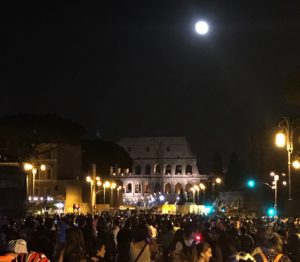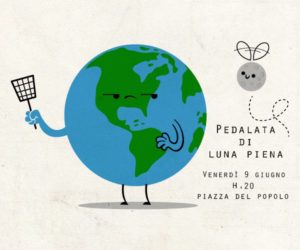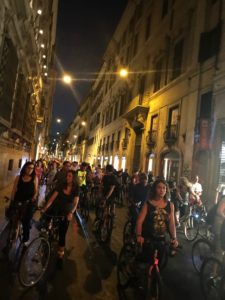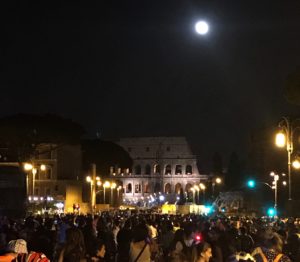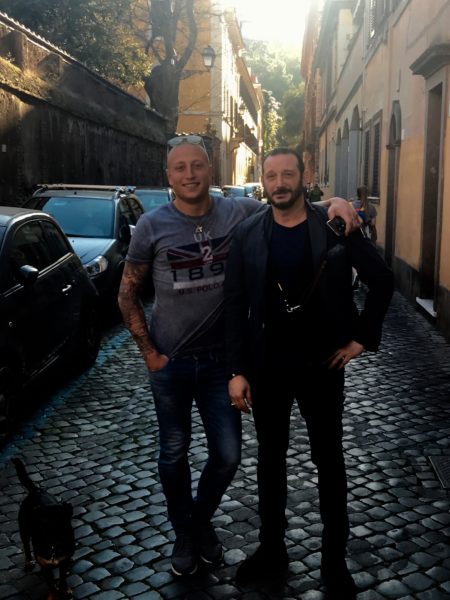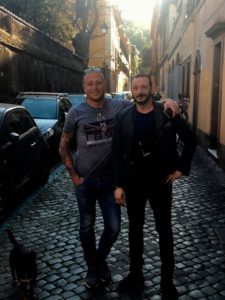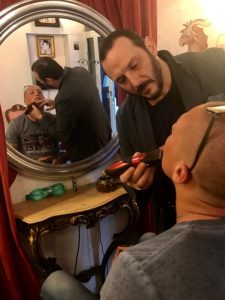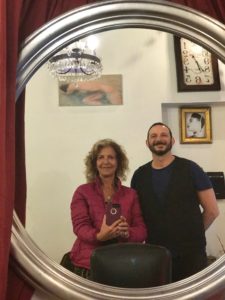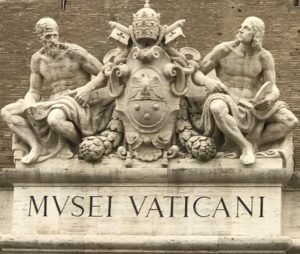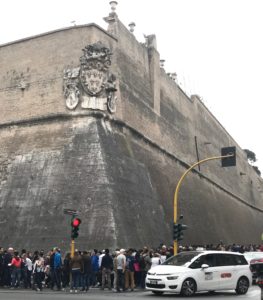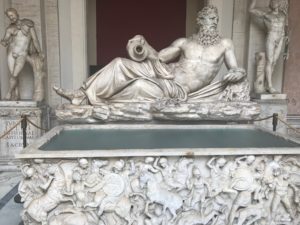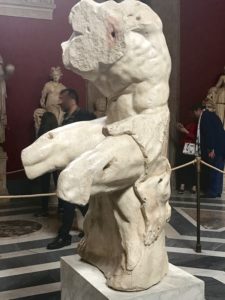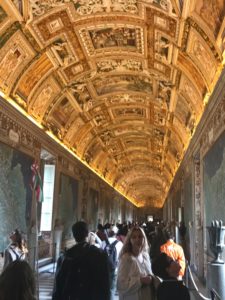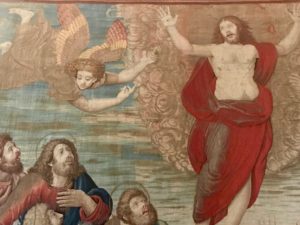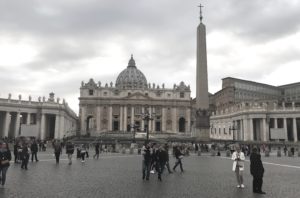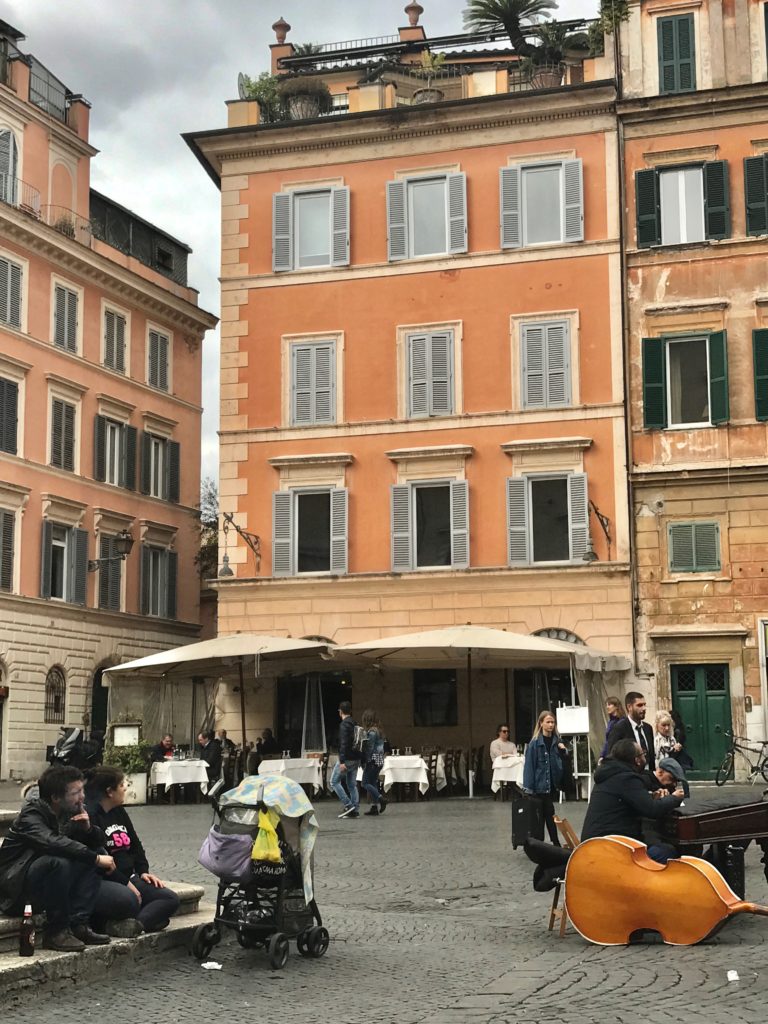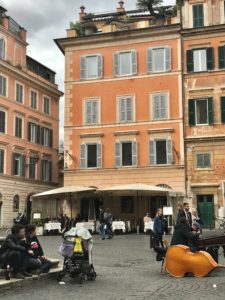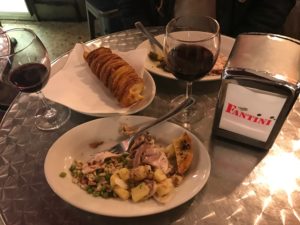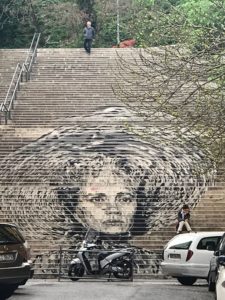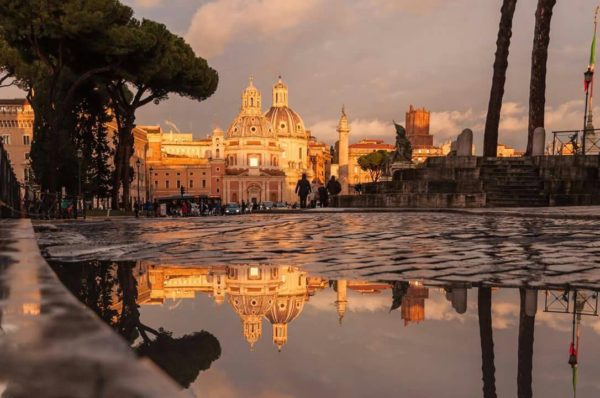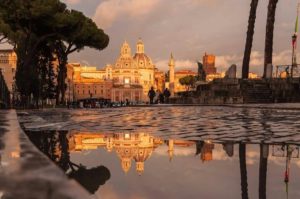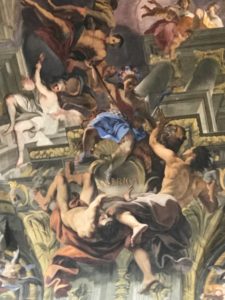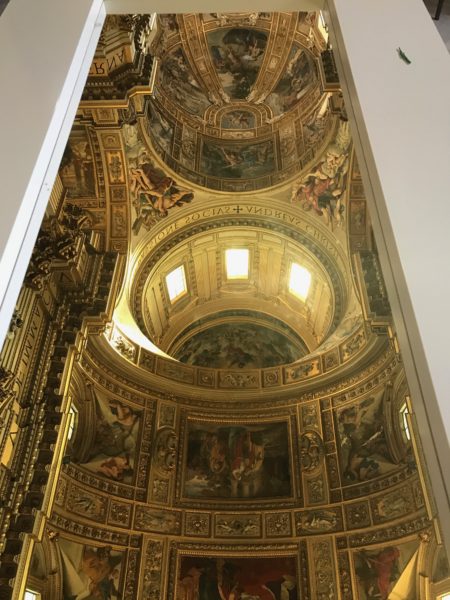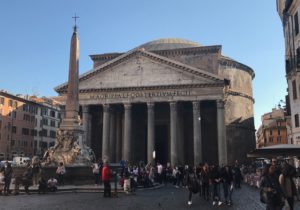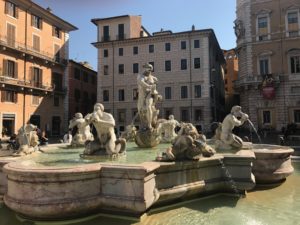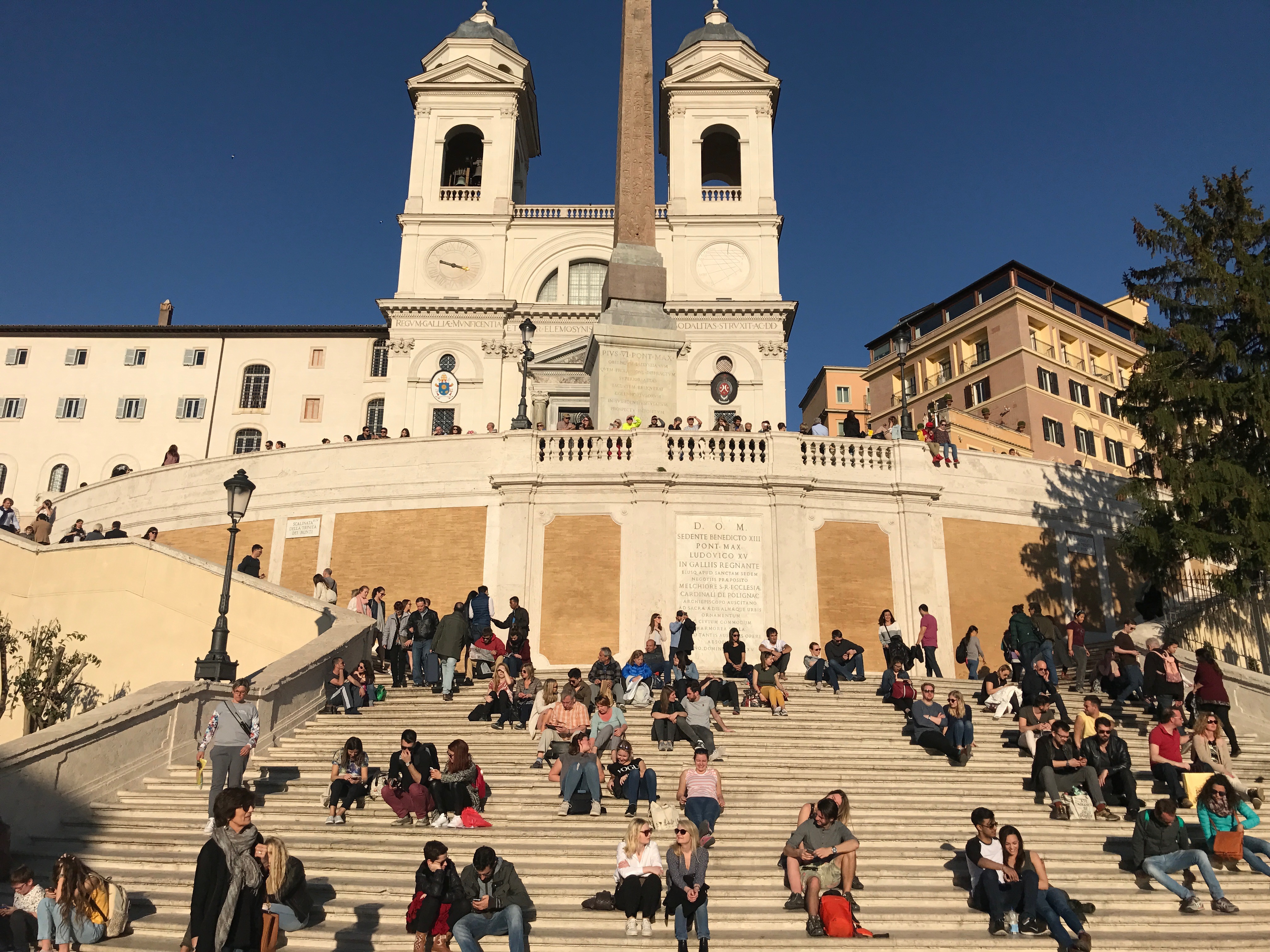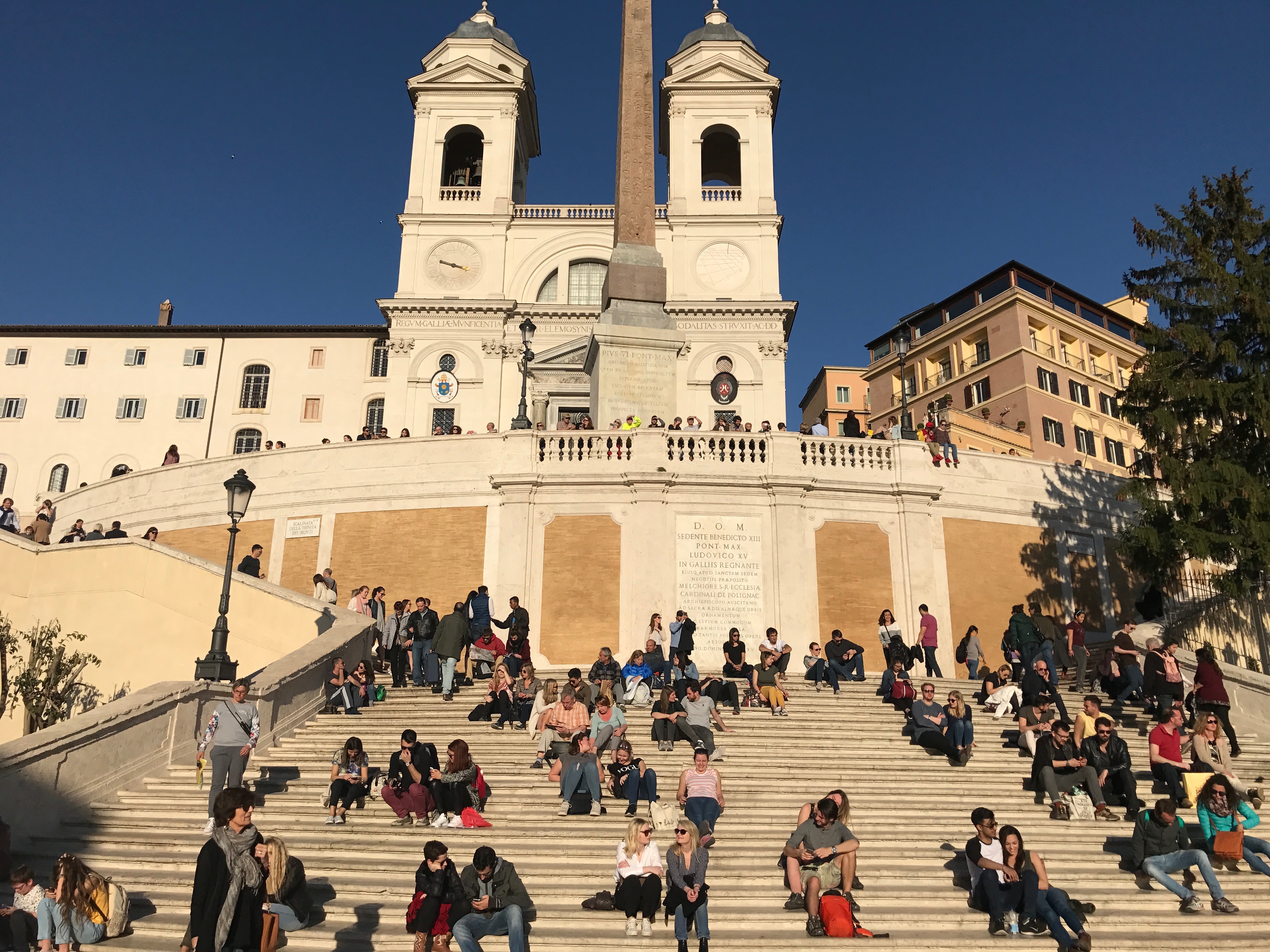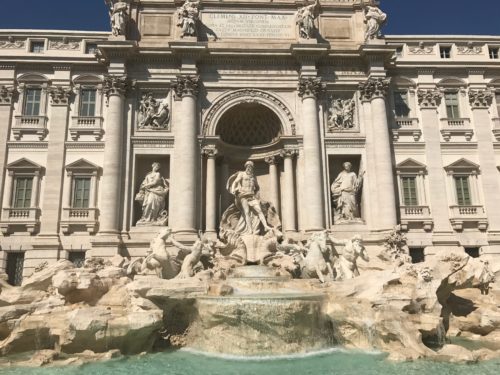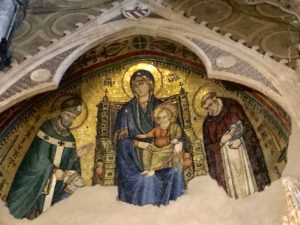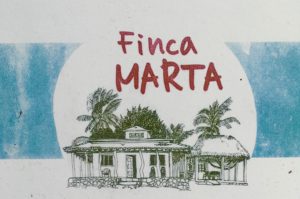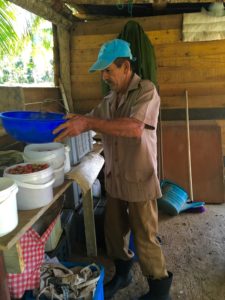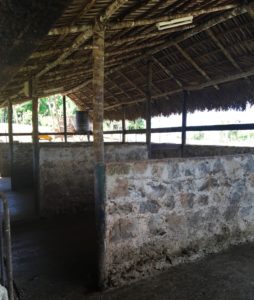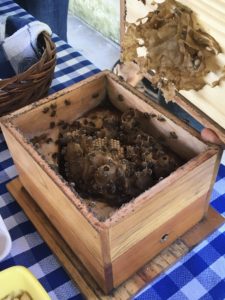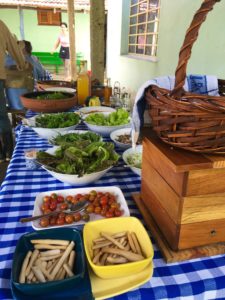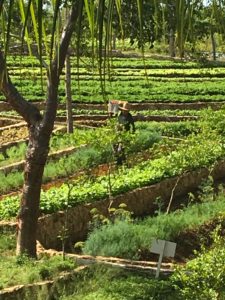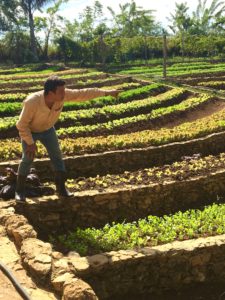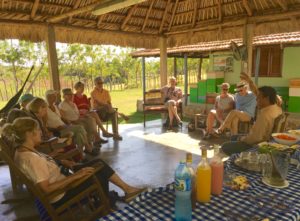I spent the winter hanging out at home, reading and absorbing some of the most important lessons about life and art. On the first day of spring I realized I’d become a bit of an art critic and there was no better place to exercise my new-found skill than Girona… when the whole city becomes an art installation called the Temps de Flors (Flower Time).
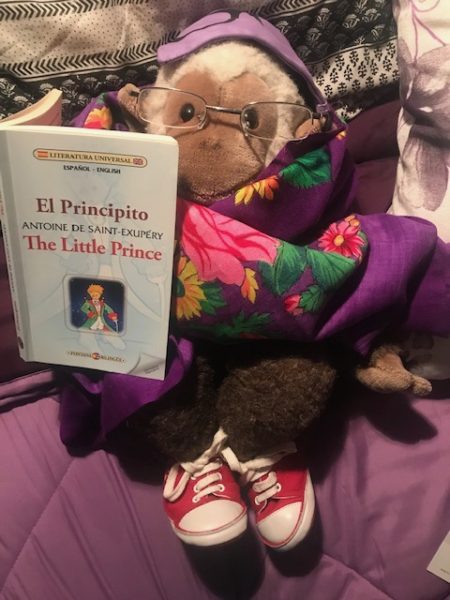
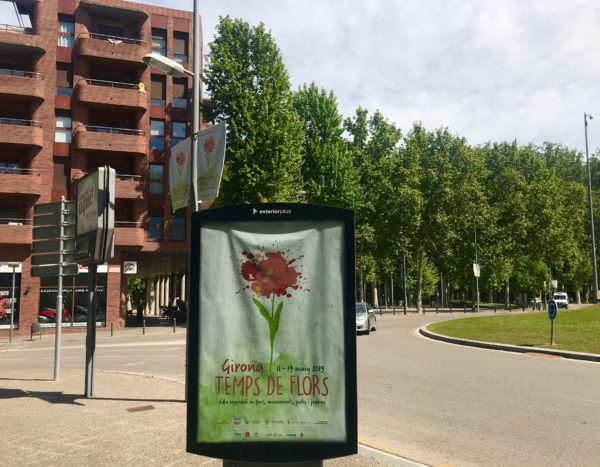
Temps de Flors sign near my house. See the plane trees of the park where I live?Every May, for the past 64 years, the City of Girona holds a party for art made from a gazillion flowers, and you know I love a party. It is a time of year when everyone has the opportunity to be an artist. From conception to realization, Sir IggyMo, Art Critic at Large, got to see how deftly the artists designed and arranged their exhibits. It had been a long time since I saw my girl so camera happy.

We saw marvelous things, like…
… a Medieval wall of blue jeans sprouting flowers and a courtyard transformed into a fantastical underwater scene.
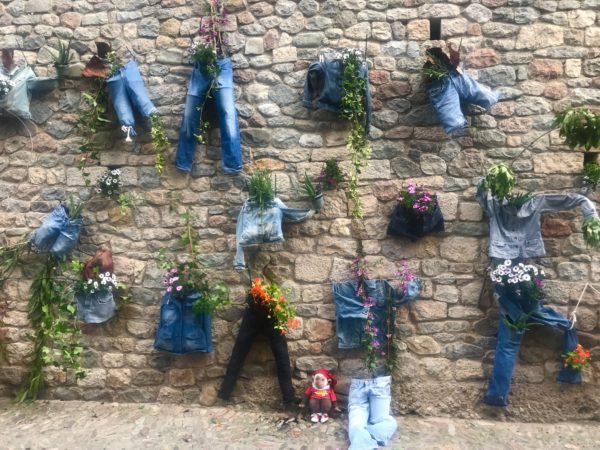

And then there was the tower (Torre Gironella), which My Girl says has a creepy history. She told me that in 1391 hundreds of men, women and children were starved to death in this tower, because they were Jewish. The story involves the Black Plague, which was claiming millions of lives all over Europe and no one knew what caused it. They were scared and wanted to blame something or someone. Like always, the easiest blame-targets are the ones different from us, the ones we don’t understand. In Spain at that time this was the Jews, and a major pogrom, or killing spree, spread across the country from Sevilla to Girona, killing thousands of people.
But, from my art critic perspective, during Temps de Flors the gloomy interior of Torre Gironella is transformed into a magical cave of flowers and sculptures. They do not erase the tragic story but bringing life and beauty to the space.
One room had a golden Buddha surrounded by flowers. On the wall a video played of Mahatma Gandhi’s peaceful marches for Indian independence from Britain. My Girl explained this is a model for the Catalan people’s commitment to peace and independence from Spain. I would not have known that as I was just appreciating the floral arrangements and colors.
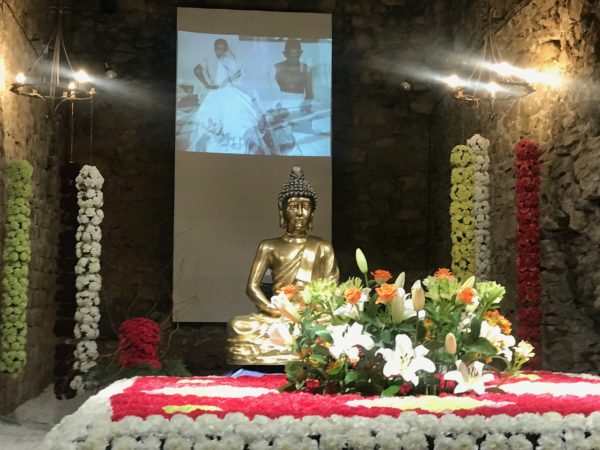
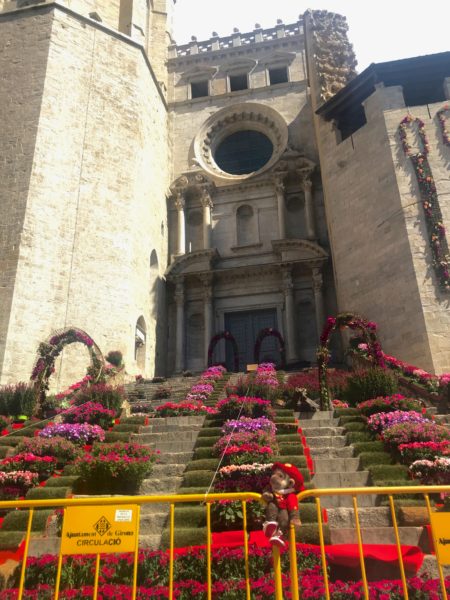
A My favorite installation was the forest of trees made of hemp and flowers on the 89 steps of the Girona Cathedral. (It is said the cathedral was built on the ruins of a Temple to the goddess Juno, mother of Minerva… but My Girl will have to tell you about that).
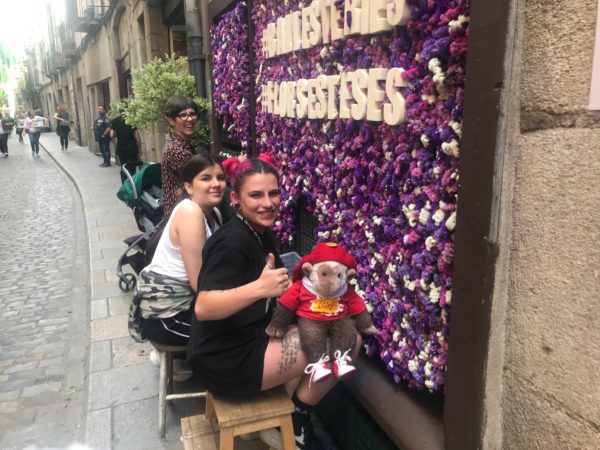
I came upon this giant fly on the wall. Flies are a strange symbol of Girona. The story involves St. Feliu (Felix) releasing a lot of flies that sent an invading French army running back across the border. The myths, legends and secrets of Girona are as thick as the Roman walls that you can still walk 2,000 years later. Imagine that!
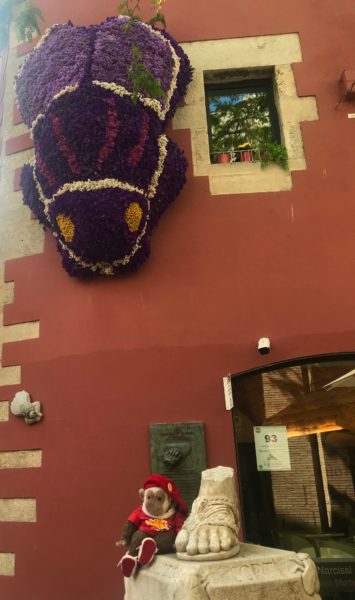
My Critic’s Choice Award goes to the magical forest of trees on the 89 steps of the Girona Cathedral.
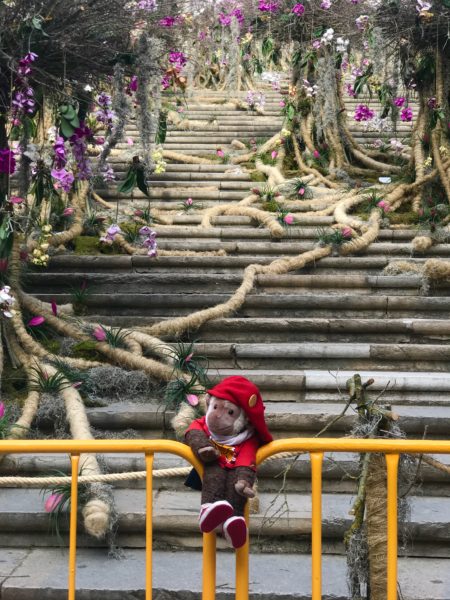
We ended our adventure back at Plaza de Independencia with a violet and coconut cone at La Bombonera, our favorite all-natural gelato parlor. The nice people who make it actually serve it. And if the store isn’t busy they will tell you all about the flavors and let you taste them. As the art critic I’ve become, I can declare with certainty that each flavor is a work of art. Next time, says My Girl, rose petals and raspberry… or pistachio and dark chocolate… or…
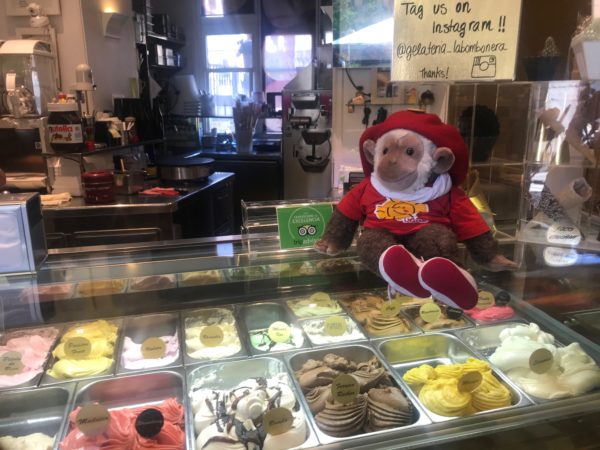
And then we headed home, with me nestled among many happy memories in my black leather bag from Rome. I look up at the plane trees that frame our camino and think, what a lucky Sir IggyMo I am!
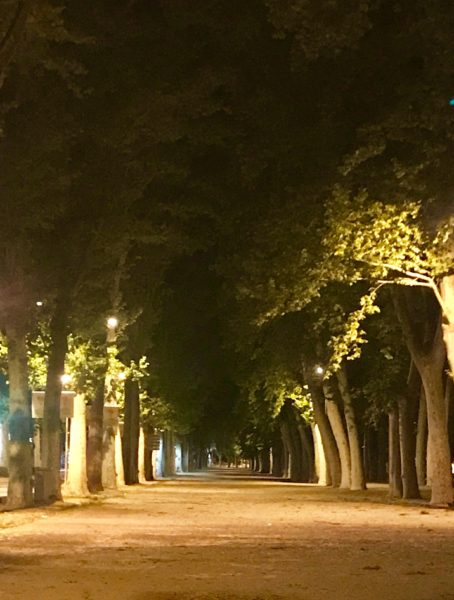
P.S.
The Temps de Flors catalog says there are 171 floral projects by 1,100 volunteers and 80 municipal workers, seen by an estimated crowd of 250,000 people, and (I add) made with millions and millions of flowers. Maybe next Flower Time you’ll be here?
Meanwhile, wherever you are, I send smiles and hugs and hope to hear from you about your adventures! (Please leave your comments below).
IggyMo is a traveling Classic Edition Gund monkey whose mission is to spread smiles and hugs. For more about his adventures, visit his Facebook page. His “My Girl’s” website is: AyshaGriffin.com and her blog for Travelers, Writers & Entrepreneurs can be enjoyed at: InhabitYourDreams.com
#incostabrava #inpyrenees #girona #spaintravel #Catalunya #tempsdeflors #GottaGetAGund #iggyMo #visitSpain #travel #traveltuesdays
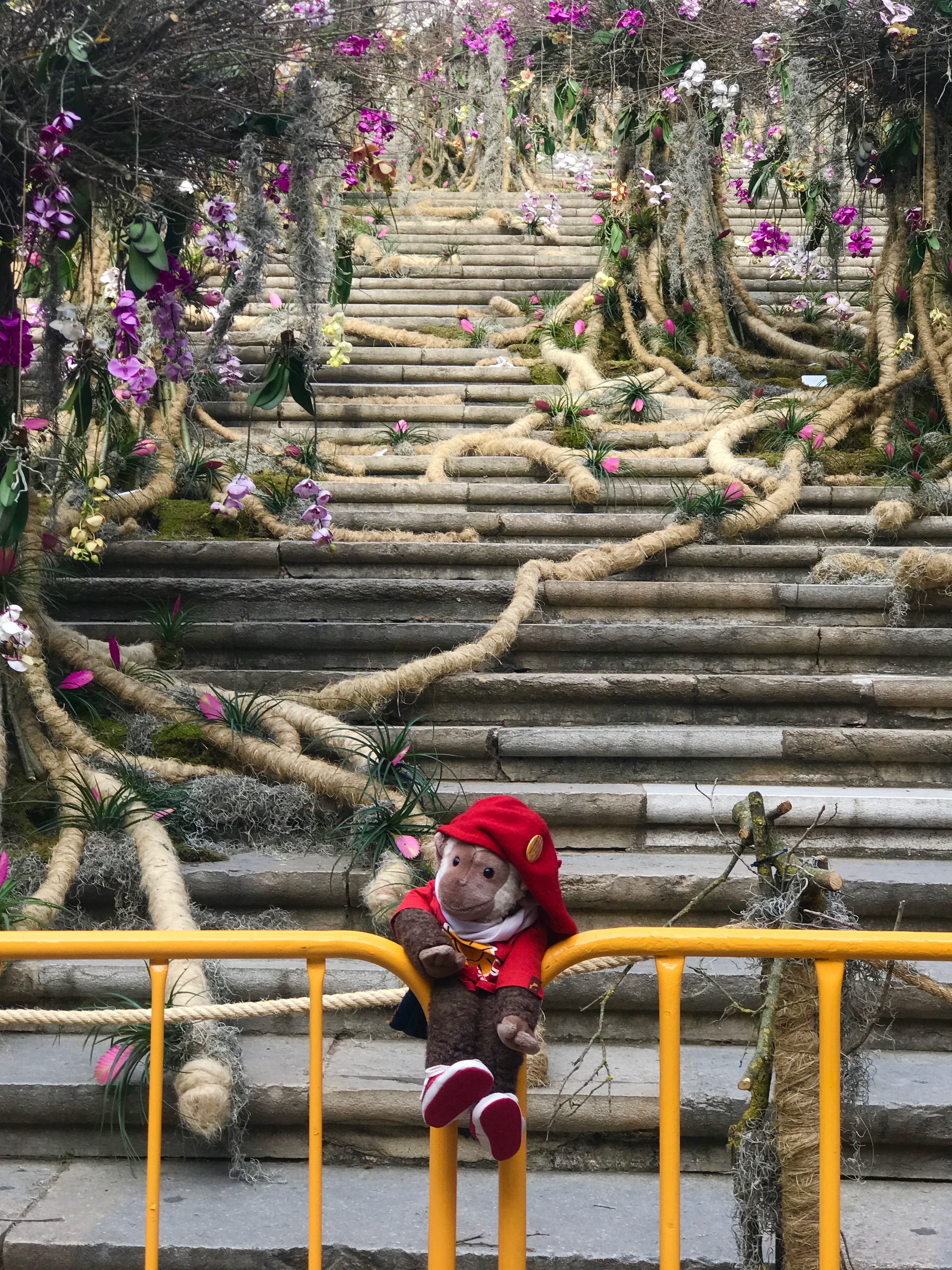
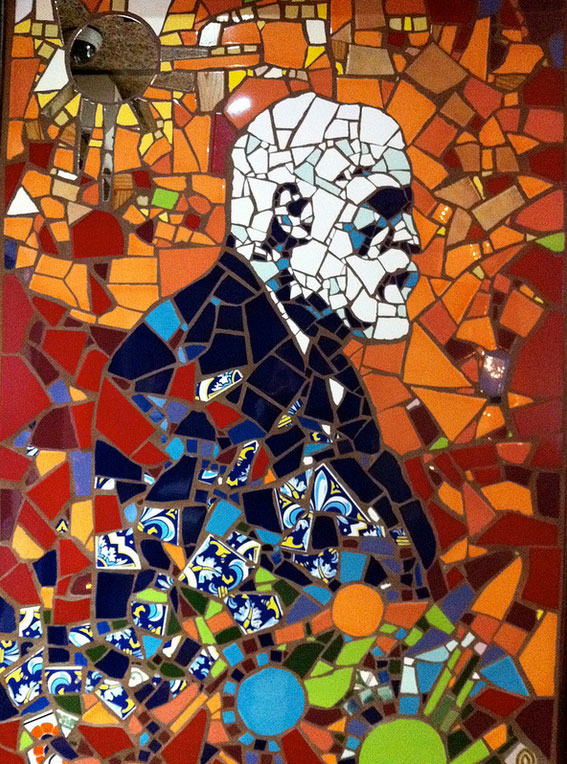
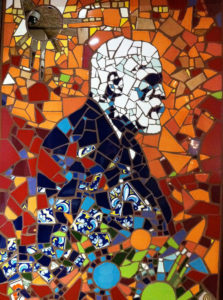
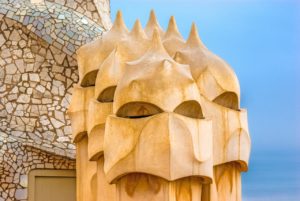
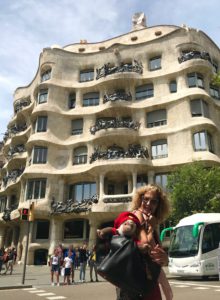 Our first stop was Casa Mila, also known as
Our first stop was Casa Mila, also known as 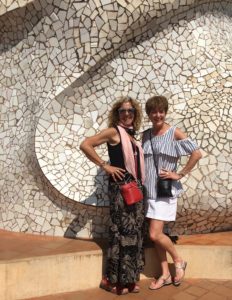 is its own fantasy world with walkways like gentle waves and sentinel-like towers, some actually functioning as vents, provoking the imagination with whimsy and awe.
is its own fantasy world with walkways like gentle waves and sentinel-like towers, some actually functioning as vents, provoking the imagination with whimsy and awe.